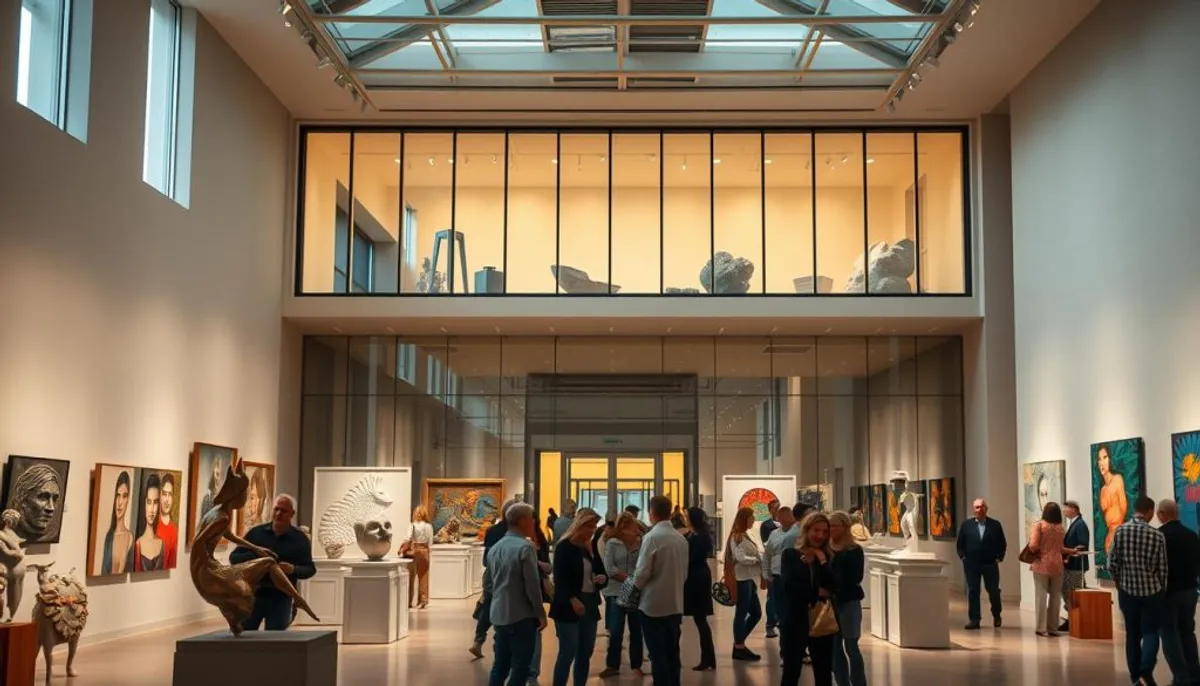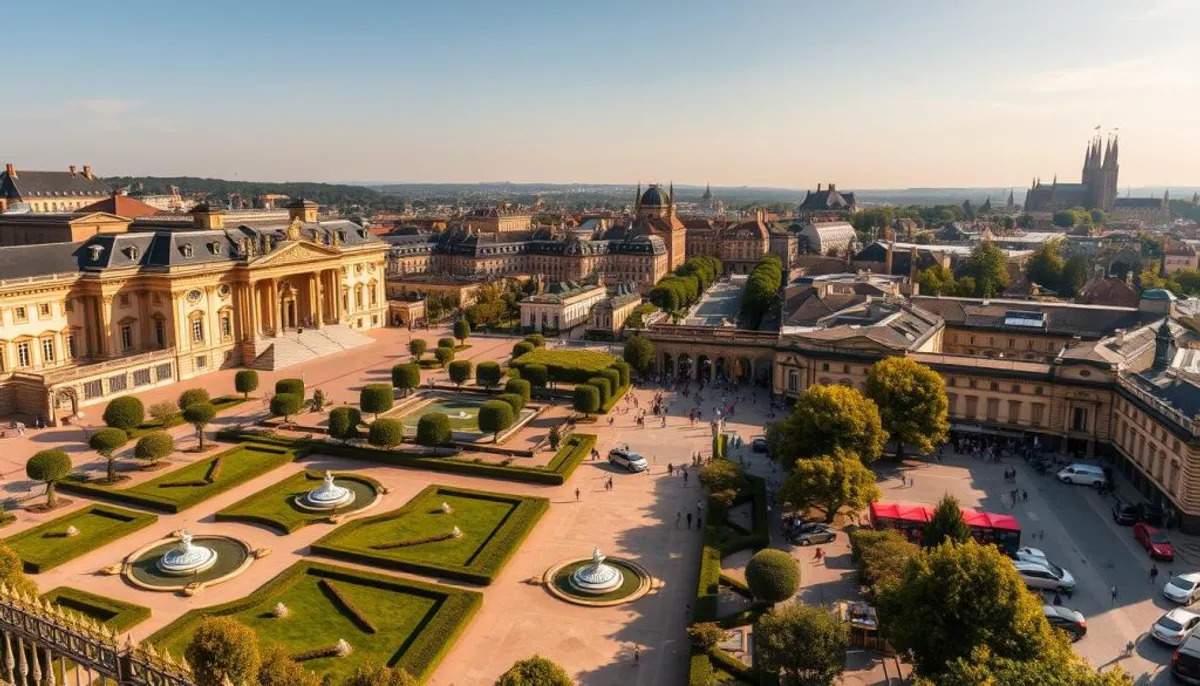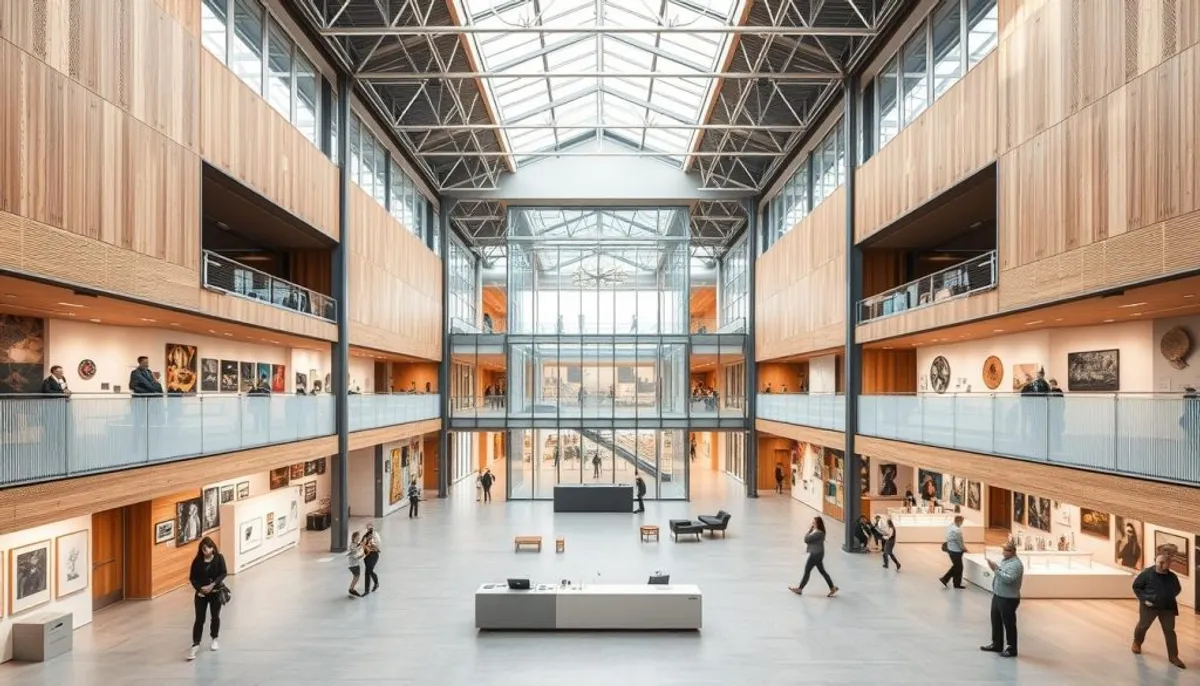The cultural space, a fundamental concept in our society, is essential for the dissemination of art and culture. It includes various places dedicated to artistic expression, education, and cultural exchange. These spaces have become pillars of our social and intellectual life.
In France, the evolution of cultural spaces reached a major turning point with the opening of the Georges-Pompidou National Center for Art and Culture in 1977. This iconic establishment perfectly illustrates the importance of a cultural space in our society. With its total area of 103,305 m², of which 45,000 m² is accessible to the public, the Pompidou Center welcomes more than 3 million visitors each year.

The impact of a cultural space like the Pompidou Center is considerable. With a collection of over 113,000 works representing 6,000 artists, it offers a unique immersion in modern and contemporary art. Its annual budget of 119.7 million euros reflects the investment necessary to maintain such a cultural venue.
At the local level, cities like Meudon illustrate the diversity of cultural spaces. There are art centers, libraries, museums, and digital spaces, forming a rich and varied network. These places not only showcase art but also create social ties and stimulate the community's creativity.
What is a cultural space: Definition and fundamental concept
A cultural space is a multifunctional place dedicated to the promotion and creation of art. It aims to make culture accessible to all. Since 1998, the "Multimedia Cultural Spaces" (ECM) program has been initiated by the Ministry of Culture and Communication. This program strengthens the role of these spaces in the French cultural landscape.
The definition of a cultural space encompasses a range of structures, from large centers like the Pompidou Center to more modest facilities, such as the Meudon Art and Culture Center. The latter, just 10 minutes from Paris-Montparnasse, embodies the concept with its 495-seat performance hall and its Art and Experimental cinema.
Essential characteristics of a cultural space
Cultural spaces are characterized by their versatility and accessibility. They host various forms of artistic expression and adapt to the needs of their community. Here are the main types of cultural spaces:
- Libraries and media libraries
- Municipal cultural centers and MJC
- Cinemas and audiovisual centers
- National stages and venues for live performance
- Art centers and schools of visual arts
| Type of cultural space | Number of ECM | Percentage |
|---|---|---|
| Libraries and media libraries | 64 | 42.7% |
| Municipal cultural centers and MJC | 38 | 25.3% |
| Cinemas and audiovisual centers | 13 | 8.7% |
| Other types | 35 | 23.3% |
The diversity of types of cultural spaces reflects the richness of the cultural offer in France. These places play a crucial role in the democratization of culture. About a quarter of the ECM are located in neighborhoods or sensitive areas under urban policy.

The architecture and organization of modern cultural spaces
Architecture is fundamental in the creation of cultural spaces in France. These places aim to offer a rich and profound experience to visitors. They also seek to enhance cultural heritage.
The design of multifunctional spaces
Modern cultural spaces are characterized by their ability to adapt to various forms of art and events. This flexibility optimizes the use of spaces and attracts a diverse audience. The Pompidou Center in Paris, with its 3,273,867 visitors in 2019, is a striking example of this approach.

Accessibility and layout of venues
Accessibility is paramount in the design of cultural spaces. It encompasses physical access for all and social accessibility. Many spaces offer free events, thus encouraging participation from everyone. The integration of technologies like augmented reality enriches the visitor experience and makes culture more accessible.
Standards and regulations for cultural facilities
Cultural spaces in France adhere to strict standards to ensure the safety and comfort of visitors. These standards cover lighting, air conditioning, acoustics, and the preservation of works. The use of big data optimizes exhibitions and personalizes the visitor experience.
| Element | Impact on the role of cultural space |
|---|---|
| Versatility | Allows hosting various events and forms of art |
| Accessibility | Encourages participation from all audiences |
| Advanced technologies | Enhances visitor experience and preservation of works |
| Strict standards | Ensures safety and comfort for visitors |
The activities and services offered in a cultural center
A cultural space is a true treasure trove of varied experiences. It enriches the lives of all, regardless of age or preferences. The diversity of offerings ensures that everyone finds their happiness.
Artistic and cultural programming
The programming of cultural centers is rich and diverse. Theater performances, concerts, films, and exhibitions are regularly offered. The Pompidou Center, for example, is an example of a cultural center offering exhibition galleries and cinema rooms.
Exhibition and performance spaces
Cultural centers have spaces specially designed to host various events. Multipurpose rooms allow for theatrical or musical performances. Exhibition galleries, on the other hand, showcase the works of artists from all backgrounds.
Educational and pedagogical services
Education is at the heart of cultural centers. They offer workshops and courses for everyone, from children to adults. English classes for younger children and computer training for adults are among the educational offerings.
| Type of activity | Example | Target audience |
|---|---|---|
| Language courses | English (12 sessions) | CE1-CE2, CM1-CM2 |
| Dance | Classical and jazz | All audiences |
| Computer science | Workshops and open access | Adults (from 16 years), Children (from 8 years) |
Cultural events range from family outings to themed cafes for parents. Local initiatives further enrich these places, including those that highlight Quebec culture and Quebec artists. Thus, artistic creation venues and cultural centers become vibrant and dynamic hearts of the community.
The Art and Culture Center: A model of excellence
The Meudon Art and Culture Center embodies the essence of a modern cultural space. It boasts impressive infrastructure, including a 495-seat performance hall and an Art and Experimental cinema. This configuration highlights the importance of cultural space in promoting various forms of artistic expression.
The center's varied programming, combining theater, concerts, performances, and cinema, perfectly illustrates the versatility of a quality cultural space. This diversity attracts a wide audience, thus culturally enriching the local community.
National statistics highlight the importance of cultural spaces in France:
- More than one million visitors frequent contemporary art centers each year.
- These spaces play a crucial role in the professionalization of the visual arts sector.
- They often serve as a springboard for emerging artists before entering public collections.
The cultural space, such as that of Meudon, fulfills several essential functions: exhibition, experimentation, production of works, research, dissemination, and mediation. This holistic approach underscores the importance of cultural space in the artistic and social development of the community.
In conclusion, the Meudon Art and Culture Center exemplifies excellence in cultural space. It demonstrates how these places can become centers of attraction, stimulating creativity and promoting access to culture for all.
Conclusion
Cultural spaces are essential in our society. They embody places where creativity, education, and exchange coexist. These art and culture centers act as catalysts, enriching both the individual and the community.
Their role evolves over time, especially in the face of digital challenges. They adapt and innovate, offering experiences that go beyond the virtual. These experiences encourage human interactions and the sharing of emotions.
In short, cultural spaces are treasures to discover and support. They constitute the heart of our communities, stimulating our curiosity and open-mindedness. Explore these havens of culture nearby; they will offer you enriching discoveries.
RelatedRelated articles


